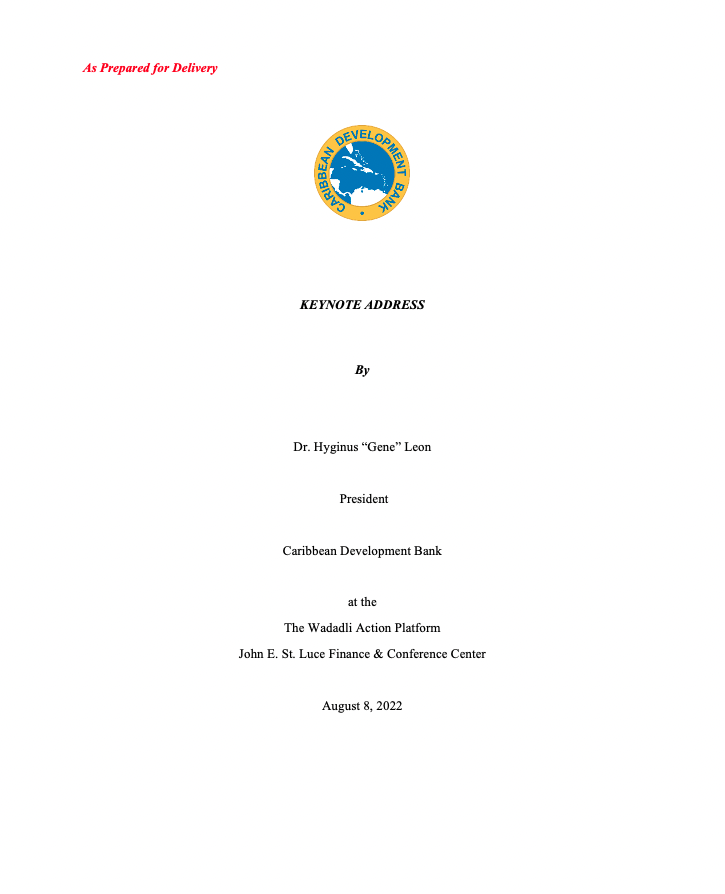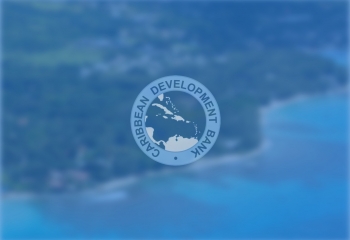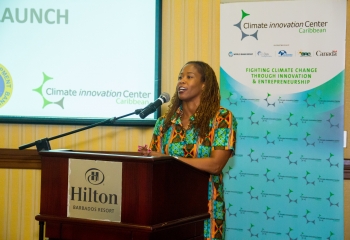Hon. E. P. Chet Greene, Excellencies, distinguished delegates and panelists, let me thank the organisers for this opportunity to share some thoughts on our passion — the development agenda.
If you will allow me to start with a brief reflection. On August 1, Caribbean countries observed Emancipation Day commemorating the end of slavery. On August 6, Jamaica celebrated 60 years of independence. One of the architects of that independence, Norman Manley, declared that it was the mission of his generation to win self-government and political power, but the task of future generations would be to reconstruct social and economic systems of society to achieve financial independence.
This meeting and its timing brings into sharp focus the fact that our collective history and indeed our present, has been marked by progress through struggle. The issues on our conference agenda (including access to finance, debt sustainability, the need for equitable measurement mechanisms for vulnerability and resilience, climate action, and access to information for decision making) are pertinent to advancing the causes of this generation and lessening the burden for future generations. So let me note that the Alliance of Small Island States (AOSIS) must be commended for playing a leadership role in convening small states and acting as champion advocate in the international arena.
So, what is the vision of the future for Small Island Developing States (SIDS)? What are the main challenges and how can we begin to address them? Allow me to summarise:
While SIDS are not a homogenous grouping regarding levels of development and nature of financial flows, most share challenges of financing for development, high per capita costs for infrastructure investment and essential services provision, and vulnerability to environmental and economic shocks. Yet, most are classified as middle-income, making them ineligible for concessional finance.
A mere 8 years away from the 2030 deadline for the achievement of the Sustainable Development Goals (SDGs), it is unfathomable that SIDS should be trapped in a “catch 22” scenario that suggests “we acknowledge your special circumstances and vulnerabilities but are reluctant to adopting specifically-aligned criteria for determining your access to finance”. Delegates, I urge you to ponder on the fact that access to finance is existential for SIDS.
The concept note raises many key issues and I would like to share some thoughts that you (delegates) can advance during this meeting.
First, we must seize the opportunity to create our future and deliver on the promise of sustainable development. It is clear that we need to come up with mechanisms that take the unique history, vulnerabilities, productive capacity, and social and economic challenges of SIDS into consideration. Our efforts over the years prove that SIDS have no comparative disadvantage when it comes to knowledge, innovation, and ingenuity. Indeed, there are no limitations on our ability to come up with solutions, but we need to overcome the hurdles within the global space and strengthen our collective will to implement solutions within our control. Where do we start?
A fundamental principle is that development is a holistic concept. It means simply that no aspect of our ecosystem can be left behind. This suggests that the development agenda must embrace internal coherence of frameworks at any point in time and temporal consistency of strategies and plans. So, although we discuss and solve specific challenges, there is need always to keep the definition and evolution of our development ecosystem firmly in mind. In that regard, there is need for an integration of the debt sustainability framework of the International Monetary Fund, the investment-growth nexus of the World Bank, and the SDG-resilience building framework of the United Nations. Only then can we truly embrace the challenges of development that SIDS face.
A key element of that integration is the need for a Multidimensional Vulnerability Index (MVI). Let me be clear. We have no option than to embrace the opportunity to ensure acceptance of this long sought for concept, and promote its use in the international community. Why? Because it has the scope to provide an effective and equitable mechanism for determining access to adequate and affordable finance, to achieve the SDGs. I say this to argue that we should be mindful of the impact of implementation, which is dependent of the definition of the concept. We are aware that the United Nations High-Level panel has made significant progress in the ongoing quest to devise a universal MVI solution that appropriately considers structural vulnerabilities and resilience in determining access to finance for small states.
Let me suggest that to get the maximum benefit for SIDS, “multidimensional” in MVI should really be interpreted as multiple dimensions of impact on the ecosystem. While we have embraced multiple factors of the definition dimension (economic, social, and environmental), we should include factors in the temporal or evolution dimension (dynamics of motion, post-shock resilience and duration of impact, and sustainability of definition). Indeed, the MVI (and suite of tools) should be a living concept, where through continuous research and development, we advance to the ultimate aim of a tool that can (1) improve access to finance to further a development purpose (whether resilience building, addressing loss and damage, or sustainable and inclusive growth); (2) influence national policies and budgets; (3) be integrated in performance-based allocation systems; and (4) evaluate and promote accountability relating to our development mission goals.
These thoughts have guided our pursuit of three tools that we believe should be integrated in the MVI, providing multidimensionality, universality, resilience, robustness, and ease of understanding but comprehensiveness in formulation.
The Internal Resilience Capacity (IRC) metric captures (pre-shock) the structural and vulnerability factors that regularly constrain growth and development; (the shock) distinguishes the magnitude, impact, and persistence of types of shock events; and (post-shock) incorporates factors (including exogenous, endogenous to policy interventions, state variables, and access to adequate and affordable finance) that influence resilience capacity and thereby the duration to recovery. The IRC can provide an easily understood dashboard for gauging the resilience capacity of countries (Low, Medium, and High), and thereby eligibility to development or concessional finance depending on need and resilience capacity.
The Recovery Duration Adjuster proposes a resilience-adjusted per capita income measure that is better suited for and more equitable in allocating much-needed financial resources for developing countries, especially after shocks. It addresses the issue of basing access to finance on pre-shock Gross National Income (GNI), which is particularly onerous and inequitable when the magnitude of the shock reduces GNI significantly and for long durations. The concept of duration to recovery, in turn, highlights the plight of countries facing multiple shocks within a period of recovery, for example, successive shocks of the global financial crisis, natural hazards, and the pandemic. Importantly, it allows a measure of welfare/GNI loss relative to pre-shock levels that can be used to customise the need for concessional finance.
A SIDS Vulnerability and Resilience Assessment Tool, a deep diagnostic of the inherent vulnerability and resilience capacity dimensions, for compiling national vulnerability-resilience profiles. The tool will enable the design of policy recommendations to address key deficiencies and to build resilience; can be used to assess, monitor, and develop national development goals and be mapped to national budgets, providing a measure of accountability; can bridge existing measures of vulnerability to sustainable measures of resilience; and provide inputs for performance-based allocation models used by International Financial Institution and Multilateral Development Banks (MDBs). This is central to post-adoption use of the MVI within the global financial architecture. CDB is ready to collaborate with others to advance this tool.
In addition, we expand the focus of economic resilience beyond debt sustainability and access to finance to encompass productive capacity (including trade/development nexus) and institutional resilience (addressing governance and implementation deficit challenges).
Finally, and more germane to the development of the Fourth International Conference on SIDS, let me briefly mention the need for a special focus on partnerships and knowledge. By this I mean the mainstreaming of a partnership in development between private and public sectors that spans initiation, design, execution, evaluation, and adaptive learning in programmes to advance toward mission-oriented goals, aimed at overcoming our most significant development challenges. This partnership would need to be complemented with policies in governance and institutional resilience to narrow our implementation deficit challenges. We should also underpin the rationale for strengthening statistical systems beyond collection and monitoring to embracing the industrialisation of knowledge by mainstreaming a KIDS process (knowledge accumulation to innovation diagnostics to transformative strategies) and a culture of evidence-based decision creation (potentially linking policies on learning, information technology, digital transformation, gender, and people with disabilities). These are areas where the Vulnerability and Resilience Assessment Tool can be at its highest potency.
In conclusion, the harsh reality for SIDS is that the vulnerability and resilience metrics chosen and adopted globally will have direct implications for sustainable development intentions. Specifically, we need a forward-looking perspective to achieve the SDGs and tools that will enable alignment with our desired “future state”. The advocacy for access to finance is literally the “independence struggle” of the 21st century, continuing the work of predecessors by accelerating social and economic development.
Let’s not limit our aspirations to anything less than will address our future needs. As we advance the quest for self-determination, let us support a comprehensively defined MVI, with an appropriate suite of supporting tools — a homegrown solution developed by SIDS for SIDS.



